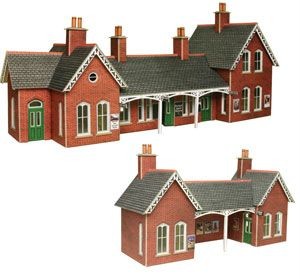It is my hope that the title of this episode will help Moody Blues fans stumble upon this blog by accidently spelling the title of their 1970 chart topping album wrong. Having explained this to you, the pun no doubt becomes a lot less funny, nevertheless in this episode I do intend to answer a Question Justin Hayward never got round to asking: 'What's the best way to fill my wagons?'
From the last two episode you will probably conclude that I 'lost the bottle' to build my own buildings and elected to buy pre made ones. You can do this with wagon loads - buy pre made, however it is not my intention to completely cheat my way through this project so here's a little idea I picked up from the excellent www.newrailwaymodellers.co.uk (If you haven't already visited this site, give it a look in, it offers a lot of advice for beginners like me) on making your own wagon loads.
How Is It that we need to 'make' a load?! - I hear you say. Why not just load up with lose scatter?
Yes, this is a cheap, easy and very athletically pleasing solution. However, what if the train derails? What if you accidently knock the wagon? You're going to create a mess of miniature aggregate all over your layout. Not to mention the extra weight you will be adding to the train...
So here's an idea to fake it. (OK so a little cheating will be involved today). The principle follows that of buying your own load. Making it look like there's more contents than there actually is...
Start by measuring out your wagons dimensions and cutting a piece of card to this size. Doesn't have to be special card, I've used a piece of Kellogg's finest. In fact I've glued two together for a bit more rigidity. This will form the base of your load.
Next up, add some smaller pieces of card to the load base. This will help raise the load up to make the wagon look full.
A work in progress....
Add some glue and go nuts with some aggregate. It's Up To You what you use here, I've gone with some spare ballast (hence title) scatter which I intend to use in the near future for my layout. You may also want to add a layer of glue over the top almost immediately using my afore mentioned pipette method to really help the ballast stick.
Go ahead and leave it to set/dry over night or over an equally large period of time.
And here we have the wagons 'full' with ballast load. I found I had to trim the card again as it must've soaked up the quantity of glue I used like a sponge. Actually, I say 'full' - it could benefit from being raised up a tad - but that's the beauty you can adjust as required whereas purchasing readymade alternative won't allow this (easily).
You get The Ballance of low weight, cheapness (It only cost me £1.99 for a big ol' bag of ballast scatter - of which I've used only a very tiny amount here) and something which looks good. In fact I think this looks better than a bought option as, well it's real aggregate!
In the next Episode 'Every Good Boy Deserves Fish Plates' we'll look at a an issue regarding track power and isolation...






































